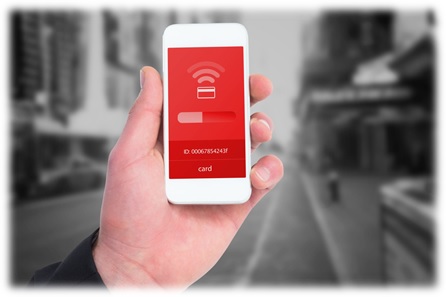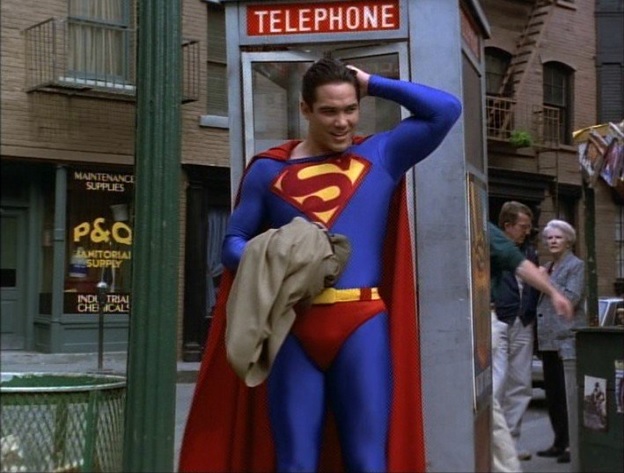Just a few short years ago, one of our employees took some time off “Up North” to get away from the office for a few days. But as we know, it’s becoming increasingly difficult to totally escape from the real-time routine and pressure that is radio.
We respect everyone’s vacation time, but as we know, nothing stops when we’re on the beach or going camping, so I always ask my people to check email once a day. In this case, the employee in question told us that WiFi and 3G service were not readily available where he was headed, so we shouldn’t expect to hear from him. But of course, his family’s Facebook page was somehow being updated with regularity throughout the vacation week.
It’s getting harder and harder to escape the omnipresence of WiFi in this country. Whether it’s airports, nail salons, restaurants, or waiting rooms at the dentist, getting online has become ubiquitous.
And now New York City is reimagining connectivity in a way that only the Big Apple could. They will begin the most challenging transition as millions of phone booths are in the process of being replaced by WiFi. Google is behind this initiative, put together by CityBridge, a tech mashup that includes a number of different companies, including Intersection and Smartscapes.
The system will place WiFi kiosks where those ubiquitous payphones used to be, featuring a range of 400 feet, tablets, 911 service, as well as charging stations. I was in Manhattan earlier this week for Gordon Borrell’s great LOAC conference, and had a chance to do some walking around the streets.
 Being in New York always brings back memories of living there in 1980 when I worked for ABC Radio. My apartment was just a block away from the Dakota, the iconic building where John and Yoko resided. When he was shot and killed in December that year, I did a number of reports for WRIF standing at a phone booth just across the street. While the Dakota continues to loom over Central Park West, that phone booth is a thing of the past.
Being in New York always brings back memories of living there in 1980 when I worked for ABC Radio. My apartment was just a block away from the Dakota, the iconic building where John and Yoko resided. When he was shot and killed in December that year, I did a number of reports for WRIF standing at a phone booth just across the street. While the Dakota continues to loom over Central Park West, that phone booth is a thing of the past.
And that’s why this CityBridge initiative is so important. It will help New Yorkers and their guests stay connected wherever they are and whenever they like – whether it’s on business, doing holiday shopping, or touring the Empire State Building or Strawberry Fields.
But the bigger message is that digital content of every kind will be available to everyone and anyone, wherever and whenever they desire as they move around Manhattan.
At the Borrell conference, you couldn’t miss the message that the key for traditional media brands is to commit to integrated digital campaigns. While many radio companies and groups have, in fact, stepped up and begun to provide more pathways to access digital content, there are three kinks in the chain:
1. The user experience – Broadcasters have historically spent considerable time, money, and effort to ensure the over-the-air signal is optimal and the sound chain is loud, clear, and dynamic. On the digital side, not so much. Routine checks and double-checks need to be initiated and implemented to ensure a great UX. As more and more people are exposed to faster speeds, better apps, and dynamic websites, expectations rise. They will not put up with a bad experience, and oftentimes, radio fails to deliver.
2. Awareness – While more and more stations provide apps, streams, podcasts, and other digital outlets, our research continues to show that even P1s aren’t always aware they exist. Broadcasters have taken it for granted that because learning how to use a radio has always been so simple, streaming and other content offerings require no explanation. The audience will just find them and figure it out. Radio must do a better job of providing an instruction manual, as well as guided tours of its services and offerings. There are many ways to enjoy today’s radio stations. Helping the audience navigate those pathways is the key to encouraging usage.
3. The content – What is being offered on radio’s digital outlets beyond repurposed content? Specifically, how can public radio content creators make better use of the digital tool kit to create new and different experiences that transcend what has already been heard on the airwaves? And when will commercial broadcasters commit to digital brand strategies and staff that will help its already beleaguered management teams prioritize their times and resources to produce content that is additive. entertaining, and able to generate revenue?
The New York City effort will undoubtedly spring up in metros around the U.S. It will be ad supported, allowing anyone and everyone to connect. Access is one thing, but speed is another. And Intersection’s Chief Innovation Office, Colin O’Donnell, tells MediaPost the nearly 7,500 WiFi kiosks will be add supported, and “so fast the most recent iPhone only capable of using less than half its available speed.” These initiatives will raise the bar for content creators, opening the door for more usage and consumption.
And when you think of technological advancements like super-fast WiFi in big cities, there will always going to be victims of disruption. It’s hard not to think of Metropolis’ most famous denizen, Superman. The Krypton native is the guy you associate with hi-speed anything. And even he is being rocked by new technology.
WiFi kiosks may, in fact, be the wave of the future, but they’re not so good for those quick changes on the fly.
- Why “Dance With Those Who Brung You” Should Be Radio’s Operating Philosophy In 2025 - April 29, 2025
- The Exponential Value of Nurturing Radio Superfans - April 28, 2025
- What To Do If Your Radio Station Goes Through A Midlife Crisis - April 25, 2025






With elementary school students, the assistive
technology options may be simpler than ones given to high school students.
Copenhagen Meeting on the Environment shows individuals, “low-carbon life” is unalterable, a lot
more people pay attention to their particular co2 emissions in the surrounding.
There are quite a number of places on can visit to find good information about subliminal technology and its affects on developing
well trained minds.